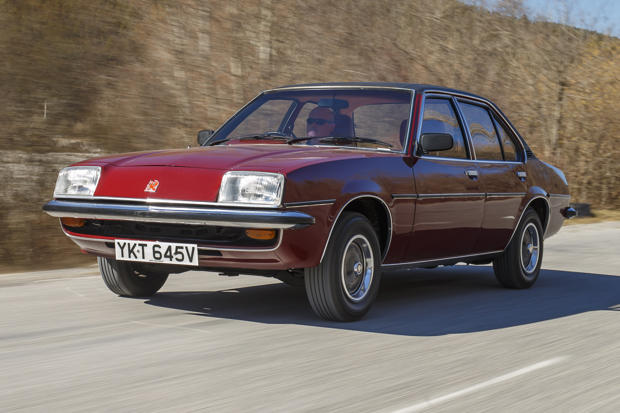Monday Motoring Classic: Vauxhall Cavalier

Towards the end of 1975, we were coming towards the end of one of the sharpest and darkest recessions in 20th century history.
Queen’s Bohemian Rhapsody was enjoying a record period at number one in the pop charts and Vauxhall finally had a viable alternative to the Ford Cortina and Morris Marina, rather than the shade-too-small Vauxhall Viva or Vauxhall FE Victor.
Enter the Vauxhall Cavalier. A car that would, in three generations, become one of the most common, most loved and, occasionally, most derided cars on British roads. Its reputation as a sales rep’s special bringing with it a mixed reception over the years.
The Mk 1 Vauxhall Cavalier was quite a revelation for the traditionally dowdy Vauxhall brand. The shovel-nosed styling, a trademark of GM’s British-born and somewhat flamboyant chief stylist, Wayne Cherry, was a massive step forward for the Luton company.
As indeed were the car’s road manners. While previous Vauxhalls, notably the Vauxhall FD and E Type Victors, were pleasant and fairly quick to drive, the Vauxhall Cavalier brought with a new kind of dynamism.
A poise and purpose that defined Britain’s motorway era, allowing Vauxhall to finally play seriously in the fleet market where it earns so much of its business today. To say the Vauxhall Cavalier was a car that truly shaped the direction of Vauxhall as we know it today would be an understatement.
In 2.0-litre form, in particular, the Mk 1 Vauxhall Cavalier was a cracking car to drive. The lesser 1.3 and 1.6-litre versions were dependable and respectable enough, but it was the 2000 GLS that was the absolute pick of the range, its status marked out by its Rostyle wheels and black vinyl roof. Status symbols that, in themselves, gave it car park kudos.
The Mk 1 Vauxhall Cavalier had a six-year innings, during which time it became one of the stalwarts of the UK’s company car parks, as well as providing dependable, affordable and spacious family motoring for thousands of British families. It was a big hit, but Vauxhall wasn’t done with the innovation.

Along came the 1980s, and with them the Vauxhall Cavalier Mk2. The 1981 Mk 2 marked a further sea change for Vauxhall. Not only was the car front-wheel-drive, a bar set a couple of years earlier by the more compact Vauxhall Astra, but it was also available as a five-door hatchback.
An estate followed a couple of years later in 1983, using the rear bodywork of the Australian-market Holden Camira, which was based on the same basic architecture.
The Mk 2 wasn’t as rewarding to drive as the Mk 1, nor did it feel quite as solidly built, but it was comfortable, quick, spacious and inexpensive to run. Just what fleet managers wanted and well-liked by fleet drivers, too.
As the 1980s surged forward into the yuppie era, the Vauxhall Cavalier changed again. More and more company cars were being introduced and with them came the era of the user chooser. Vauxhall had to diversify. Posh Vauxhall Cavaliers came along, badged CDX, along with sporty variants such as the SRi, and the sportiest of the lot, the SRi 130, named for its power output in bhp.
Alas, the Vauxhall Cavalier’s commonality and serve-all durability meant that, as with most family saloons, it went from desirable sporting saloon to clapped out banger in a relatively short period. Its fall from prestige ending at many a mini cab office, banger racing track or the scrap yard.
And that’s how many people remember it – though in many ways, that makes it a true car of the people. Find a classic Vauxhall for sale.

What is my Ford Escort MK2 RS2000 Custom worth?


